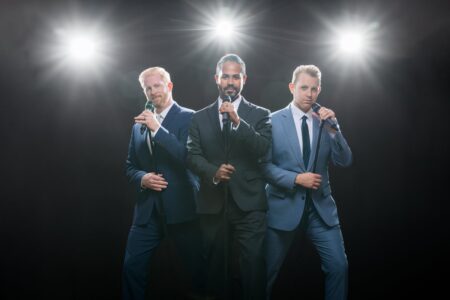Retirement’s Comic Relief: It’s Stanley Cup time
Shinty, a contest played in Scotland in addition to England’s field hockey, influenced our Canadian neighbors with prolonged winters and frozen ponds to dream up the game of ice hockey. The first indoor hockey match was played in Montreal in 1875. The length of the rink and use of a puck have remained elements unchanged for 150 years. Of course, there have been some modifications – such as a requirement for helmets now and optional mouth guards.
Coffee wasn’t included in my daily routine in 1977. But, I soon adopted the habit, downing four or five cups of joe most mornings. The eventual outcome was caffeine-driven acceleration of heartbeats to numbers just shy of those for hummingbirds.
On one occasion, it seemed wise to pay a visit to St. Joe’s emergency room to see what could be done about the flutter. The E.R. physician introduced himself and began asking questions to sort out my problem. He also asked where I was from and what kind of work I did. After reporting, “I’m from Minot. I’m an orthodontist,” he posed, holding an exaggerated smile. “See these?” he said, sliding a finger over his upper incisors. He smiled again adding, “That’s a bridge. The day after my braces were removed when I was fourteen, my pals and I decided to meet at the ice rink after school for some extra hockey practice. I went home without my front teeth. Wow! Was my mother ever mad!”
This time of the year always brings that memory back – 48 years later. With Stanley Cup playoffs in full swing, I often find myself tuning in games. I admit hockey and ice skating have not been a long-time focus of mine. I spent time at the roller-rink now and then as a kid. Most of that effort was devoted to the Hokey Pokey and persistent circles around the rink. A fellow once ran over me and bounced my head off the floor like a basketball, resulting in a forehead with a walnut when I got home. I strapped on ice skates as a high school senior and quickly learned they didn’t work anything like roller skates.
In dental school, I found the courage to ask a hygiene student out on a date to an NHL Kansas City Blades hockey game. She had no understanding of the game, but I pretended I did. The jig was up when the third quarter ended, and we sat waiting for the fourth quarter to start as other fans left the arena. Who knew there are only three quarters in a hockey game?
Rita and I attended a Fighting Sioux hockey skirmish years ago when T.J. Oshe was the star player. I watched as he came screaming behind and around the opponent’s net with the puck, his shoulder practically touching the ice as he leaned sideways to the opposite side and slipped it in for the score. The goalie never knew what happened. After Oshe signed with the Washington Capitals, I became a loyal fan.
Of course, no discussion of hockey is complete without mentioning Minot’s Reggie Morelli. A University of North Dakota Hall of Famer, Reggie never shied away from enthusiastic and generous support of anything hockey in addition to many other causes. In addition to earning All American Honors as a UND player in 1959, he was named Most Outstanding Player in the NCAA tournament in Troy, New York, scoring the overtime game’s winning goal that brought UND a National Championship title.
Hockey remains an enigma for me. For one thing, to possess talent in the game, as it was for Morelli, you should have more than two vowels in your name. Also, those with names like Smith, Jones or Wilson don’t have much chance to land an NHL contract. Teams prefer athletes with names that include etzky, ovsky, emiux, ovitchnecov (some three-vowel exceptions) or with no less than four missing front teeth.




